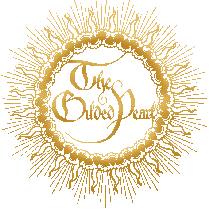 

|
 

|

Baroness Mistress Dorren of Ashwell
Documentation:
Measurements:
Design Process and Execution: To make the fabric cap, I compared the flat illustrations in
Pictorial with my own head measurements,
and guessed. My prototype cap was made from scrap muslin, and
originally, did not include the triangular area at the center
of the cap; from my own experiments, the cap fitted best if this
area was left plain and the cap seamed along the top of the head,
then the plain triangle cut off. I decided to use this construction
method despite the knowledge that the flat coifs illustrated in
Pictorial were full embroidered. [About ¼ way through the embroidery,
I was told that this was not an authentic method of coif construction,
so I added leaves to the triangular area, unwilling to scrap so
many hours of work. I am still waiting to find out the period
construction method from someone who has actually examined historic
pieces - if anyone can help with this, please contact me!] Making
the cap pattern was mostly trial and error with the muslin; the
measurements I used to help design the cap were:
My goal was not necessarily to do the fillings entirely in double-running
stitch; some of the patterns I used are not reversible, and I
opted for monochrome speckling for the acorns - which are a bit
small to show more then the simplest patterns - since this is
considered [at least in the SCA] a variant of blackwork. As the
original concept of the cap was to present a usable sampler, I
feel justified in including multiple techniques, even if mixing
them is not specifically documentable. I would also add some floral or animal motifs; I think this would
help with the visual complexity and add a more authentic touch to
the cap. I am still debating about adding spangles; I welcome comments
and suggestions regarding them.
The design and prototyping time took the least amount of time,
at several hours. The research likewise was very brief, since I
already owned my sources, and had only to locate the appropriate
plates and illustrations. The charcoal drawings onto the fabric
took an afternoon; this might have gone quicker had I pressed the
leaves into ground charcoal and transferred then in that fashion,
but I was unwilling to spread charcoal all over the house, and would
have gotten it everywhere as I backstitched the leaf outlines! In
all, the cap required several hundred hours of embroidery time;
I stopped counting somewhere after 100 hours, and I wasn’t anywhere
near finished.
I look forward to finding out the method of construction so I
can finish making the cap, and will, at that time, try to share
a picture of the finished product on this page! I can be reached with comments/suggestions/advice at dorrenash@yahoo.com
[Barbara L. Ding]
Seam lines shown on web site are approximate; I have them basted
onto the actual cap, but the basting did not show up well for the
reproduction, and was redrawn by hand.
This coif started out as my solution to making a sampler that
would be practical and usable once completed. I settled on making
a cap covered in leaves after seeing multiple examples of this
in A Pictorial History of Embroidery;
the leaves were a common design element of Tudor and Elizabethan
embroidery, and there were several clear photographs of caps [not
made up] that allowed me to figure out how to make a pattern comparable
to those from the book.
There wasn’t actually a plan for the blackwork patterns. I used
the resources listed above, and just put things into leave wherever
I felt they would look good. This led to a few problems - in one
case, I did identical patterns in two adjacent leaves - and some
areas of the cap are considerably denser with embroidery than other
areas. The leaves themselves posed more of a challenge than I had
anticipated; particularly in the very irregular areas of the maples,
where counting became a real nightmare at times! I would suggest
sticking to more regular forms when using leaves, or using the simpler
patterns to fill the more complex leaf patterns. Some of the patterns
were simple to figure out; others required careful diagramming on
graph paper with colored markers, and a few designs were executed
on scrap fabric to find the best path for embroidery.
If I could start over again on this particular project, I would avoid
the mirror symmetry of the sides in favor of a more varied pattern.
The time it would have taken to draw asymmetric sides is insignificant
in light of the scope of the whole project; another hour of drawing,
maybe.
![]()
 Back
to the Gilded Pearl Gallery
Back
to the Gilded Pearl Gallery